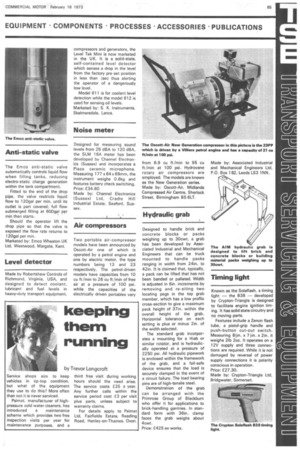Hydraulic grab
Page 67

If you've noticed an error in this article please click here to report it so we can fix it.
Designed to handle brick and concrete blocks or packs weighing up to 30cwt, a grab has been developed by Associated Industrial and Mechanical Engineers that can be truck mounted to handle packs ranging in width from 24in. to 42in. It is claimed that, typically, a pack can be lifted that has not been banded or palleted. Width is adjusted in 6in. increments by removing and re-siting two locating pegs in the top grab member, which has a low profile cross-section to give a maximum pack height of 37in. within the overall height of the grab. Horizontal tolerance on each setting is plus or minus 2in. of the width selected.
The standard grab incorporates a mounting for a Hiab or similar rotator, and is hydraulically operated at a pressure of 2250 psi. All hydraulic pipework is enclosed within the framework of the grab, and a fail-safe device ensures that the load is securely clamped in the event of a circuit failure. The load bearing pins are of high-tensile steel.
Demonstration of the grab can be arranged with the Primrose Group of Blackburn who offer it for applications to brick-handling gantries. In standard form with 36in. clamp faces the grab weighs about 4cwt.
Price: £425 ex works.












































































































